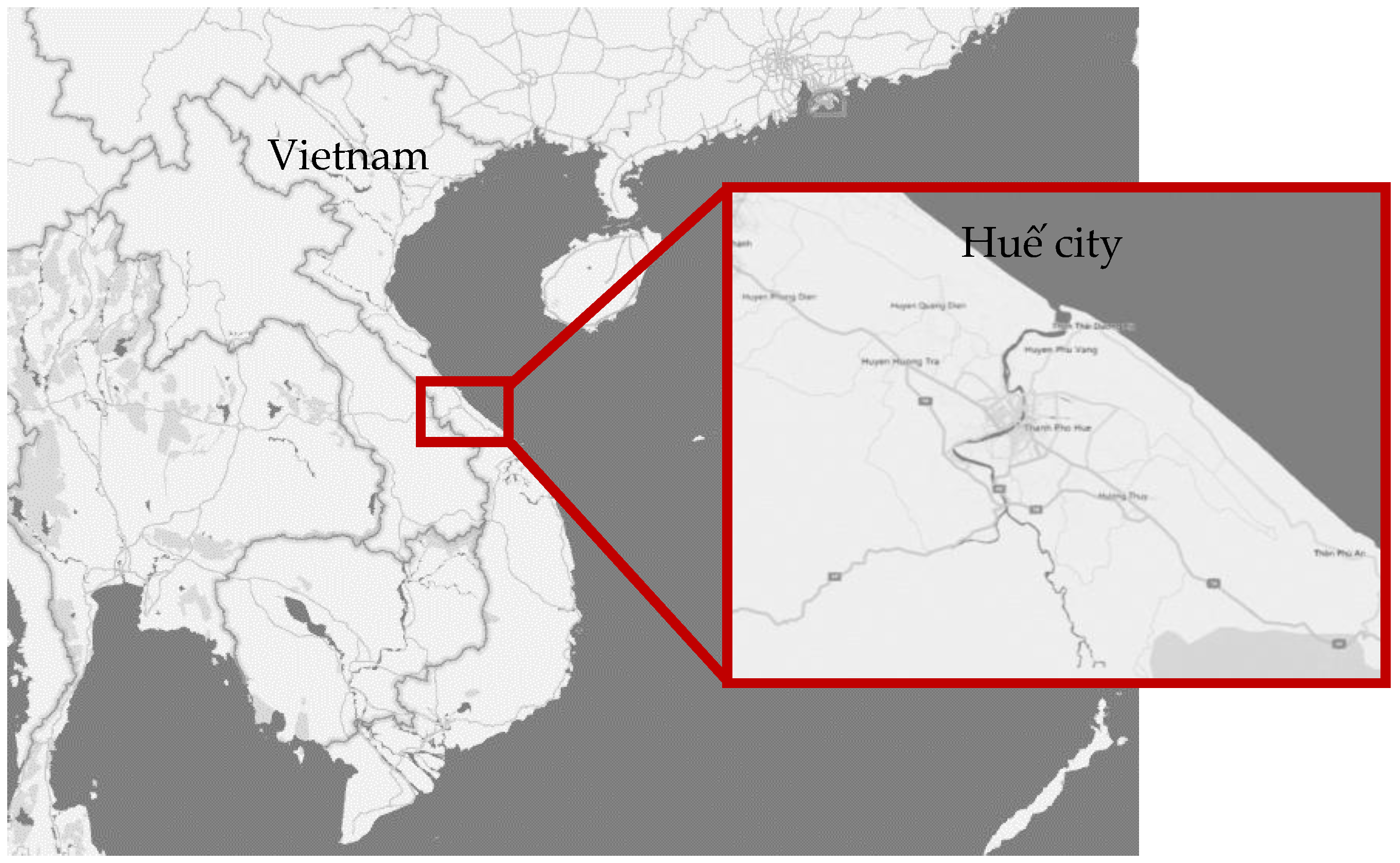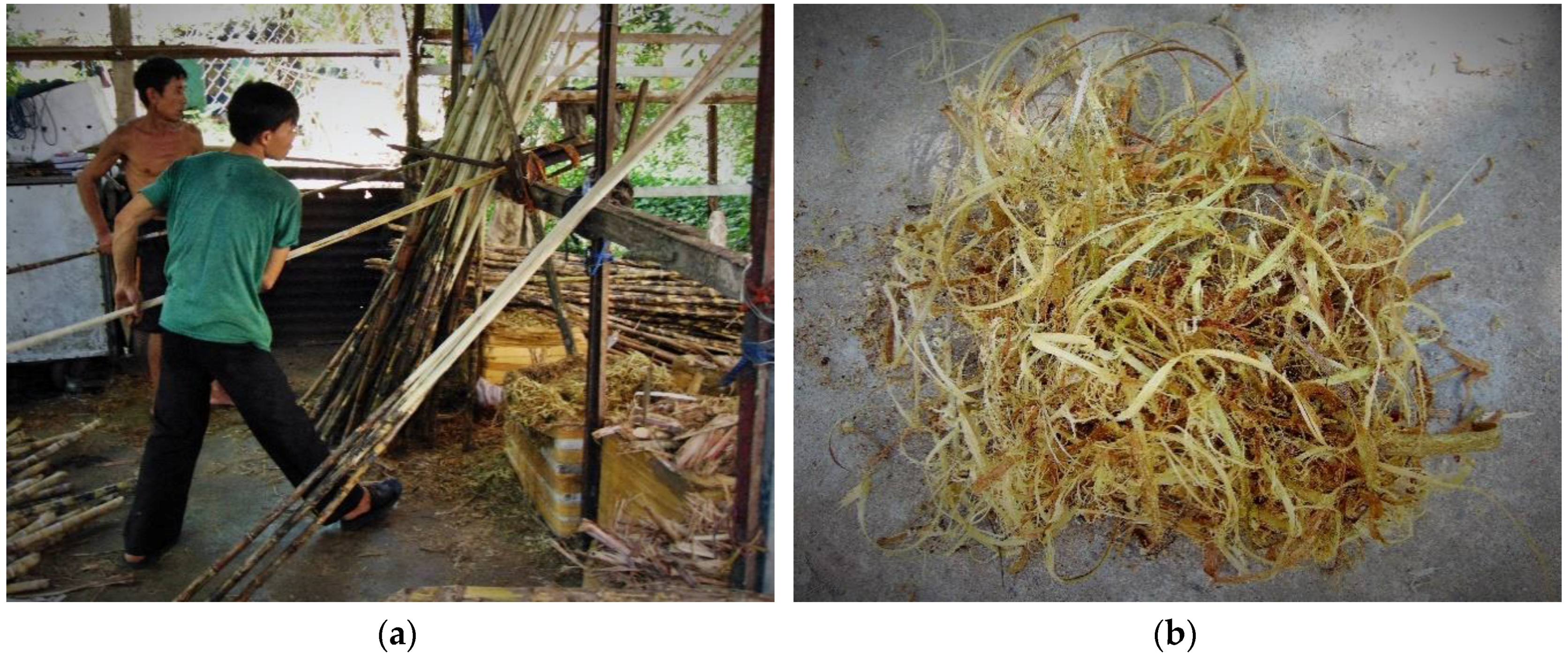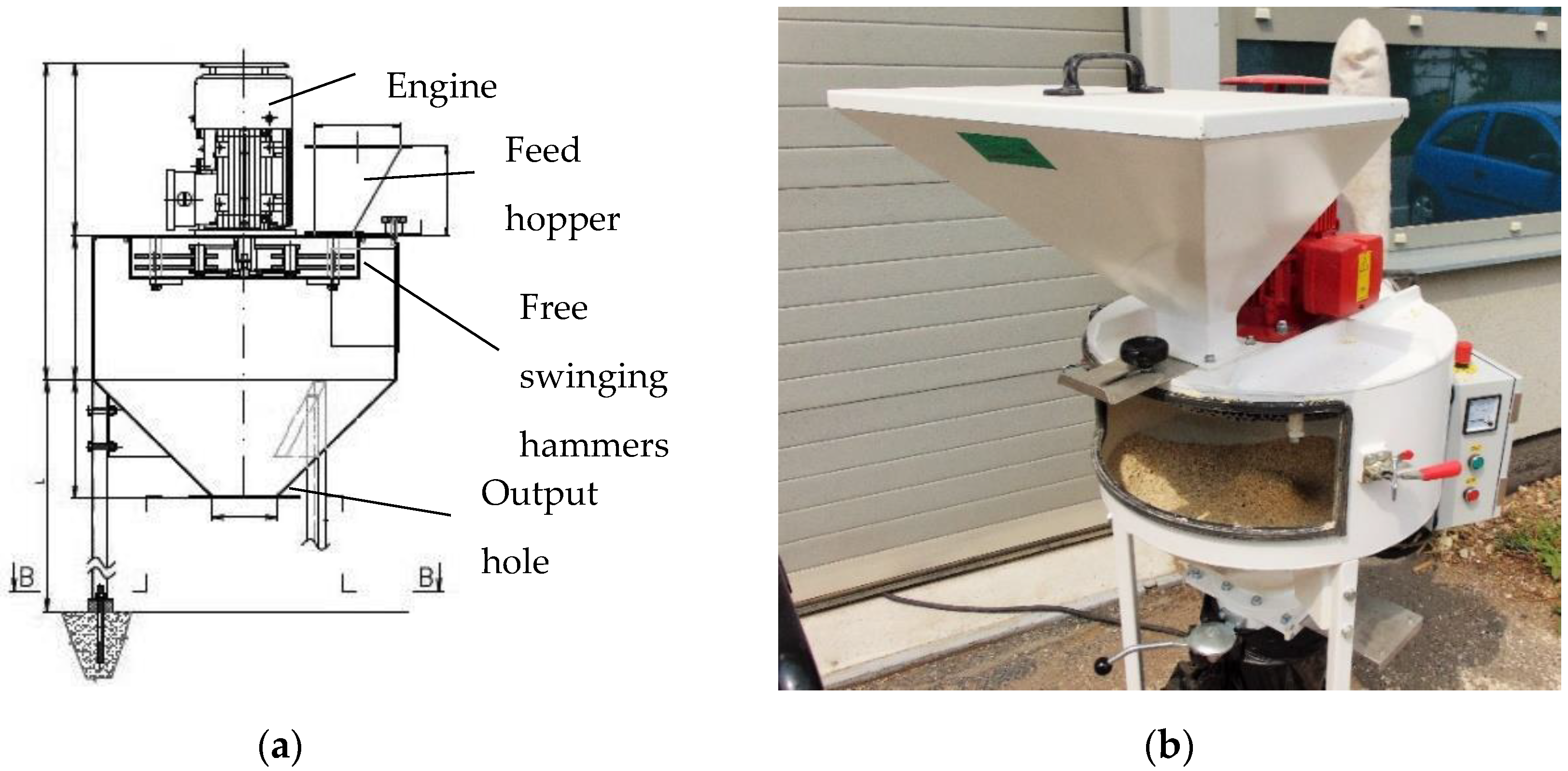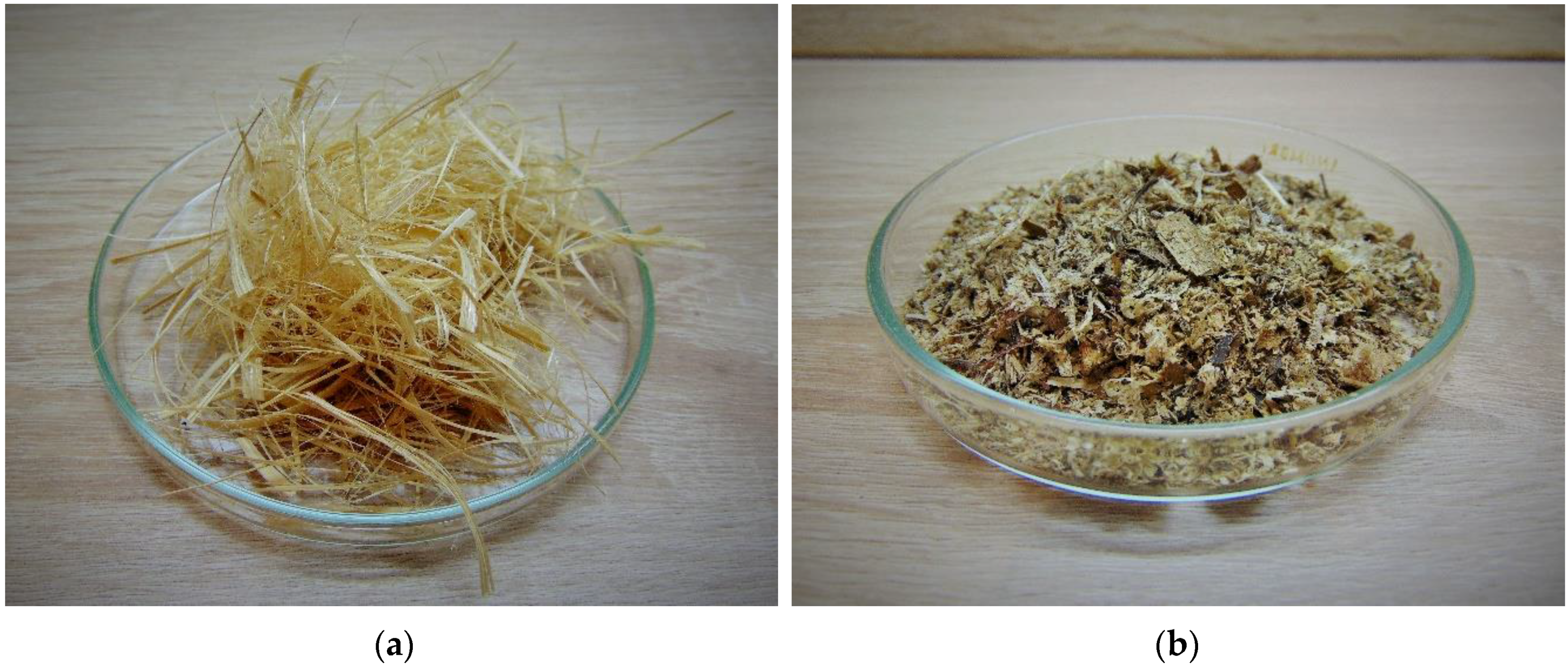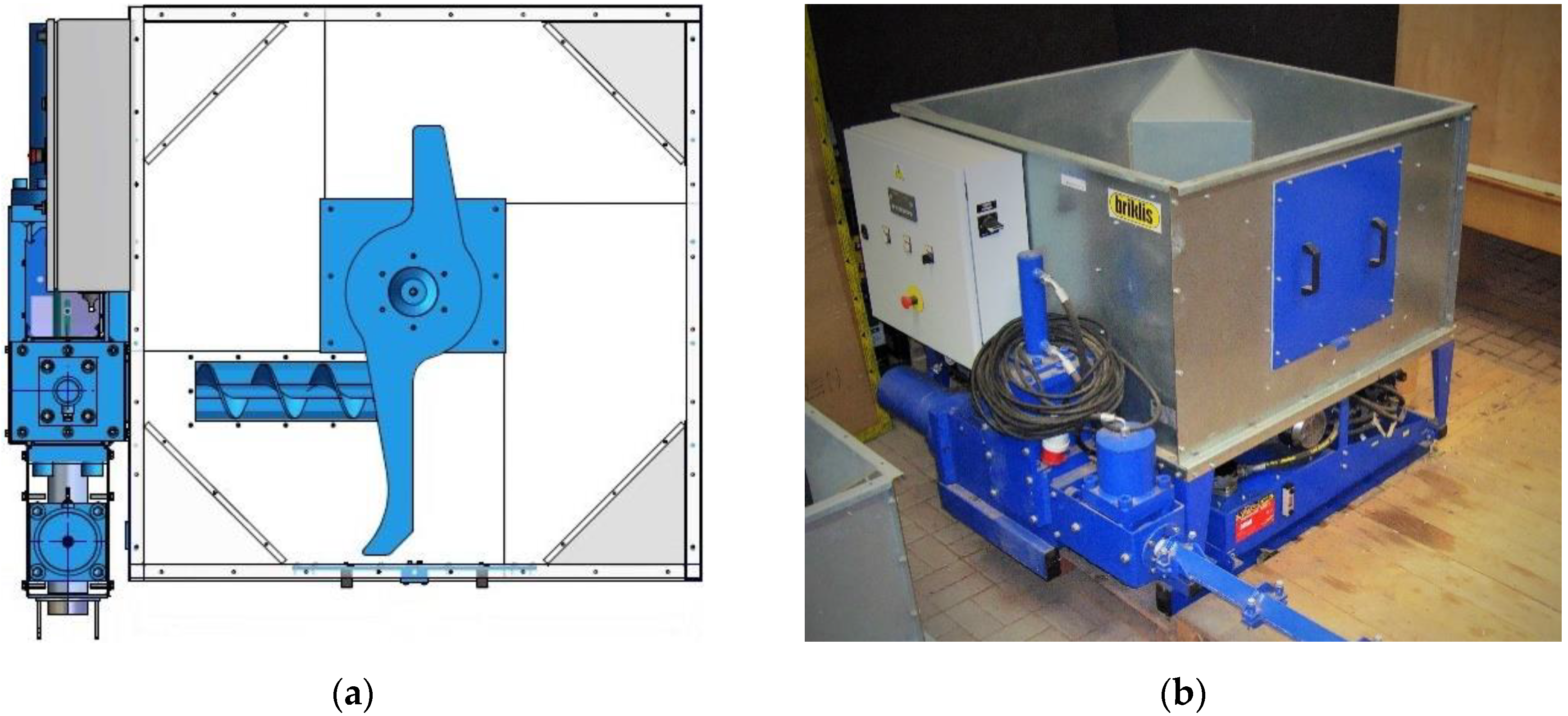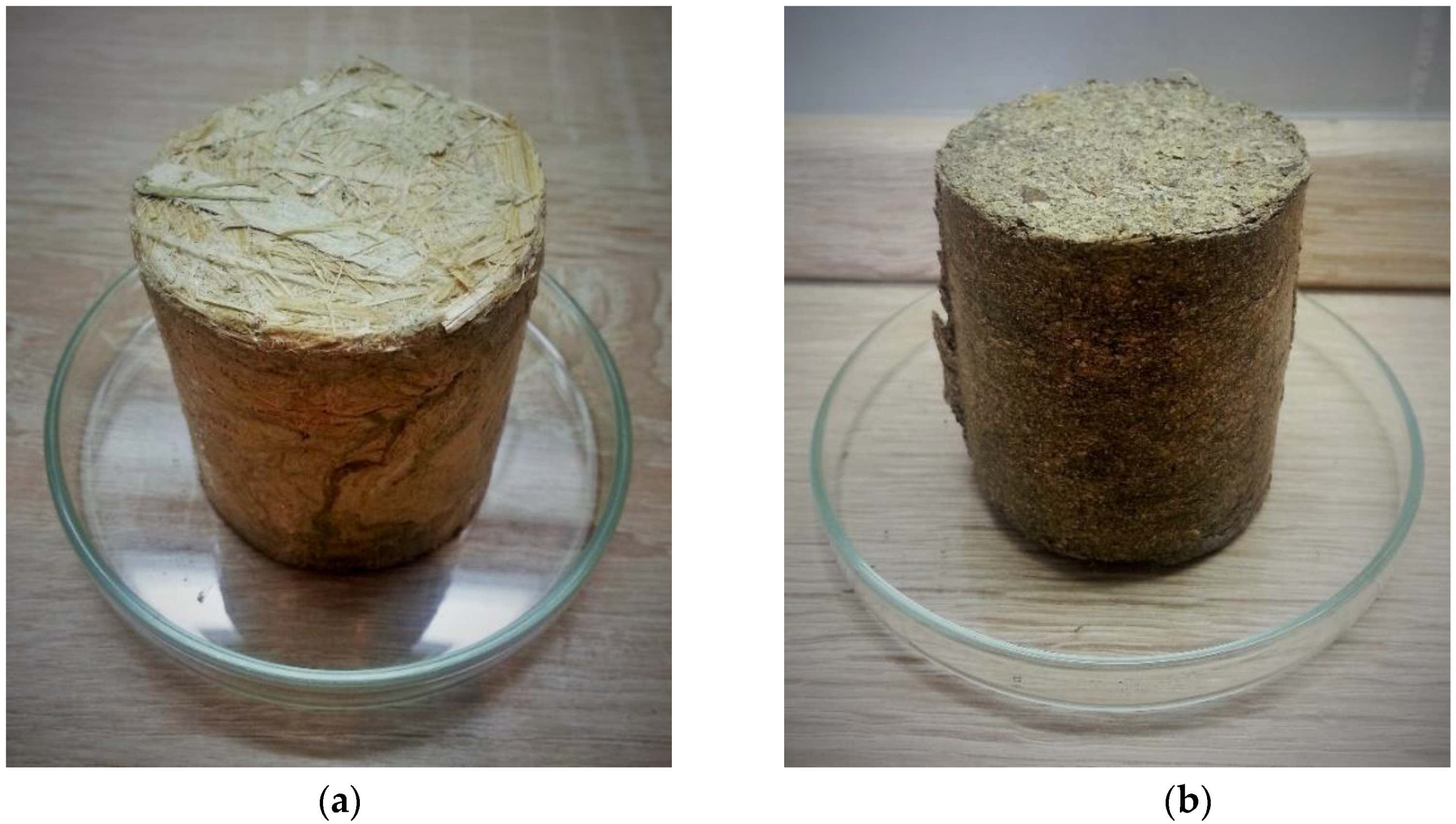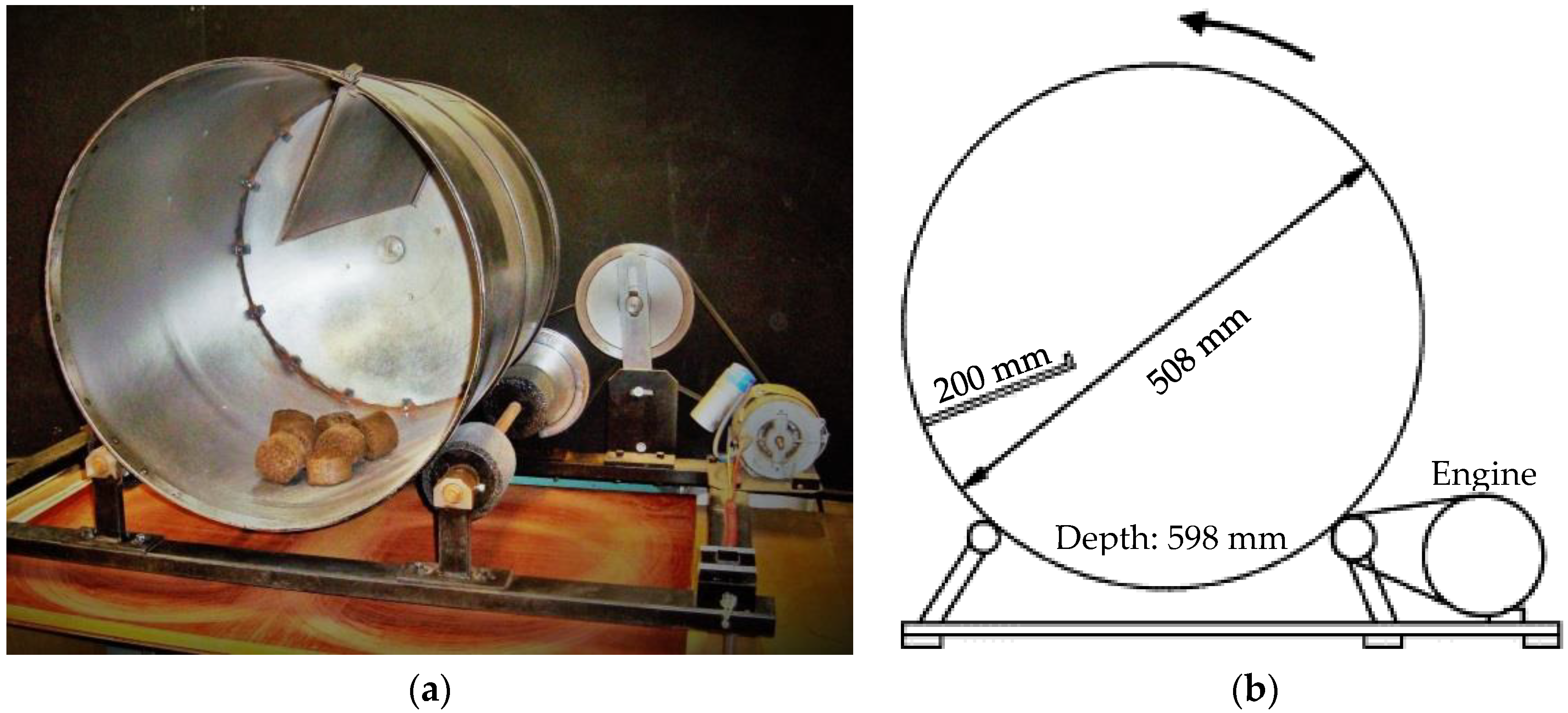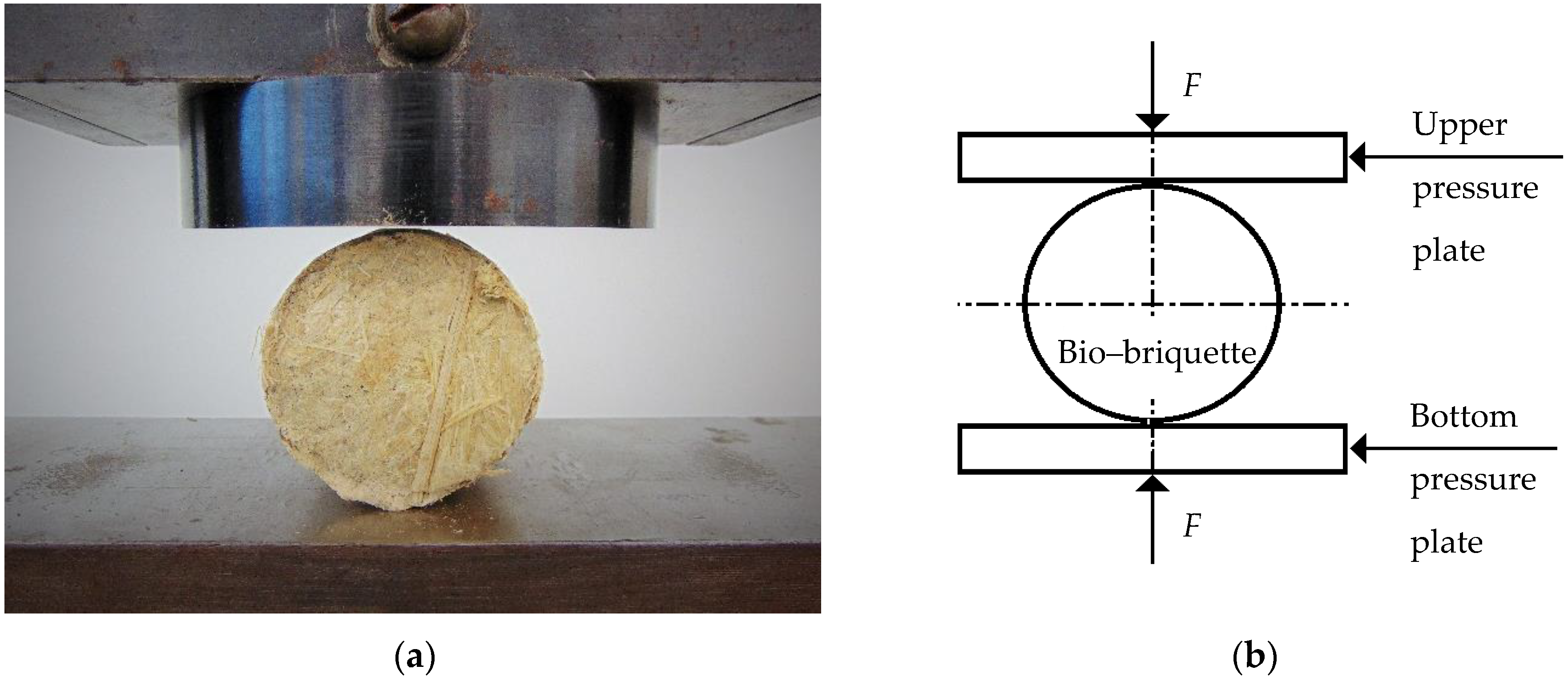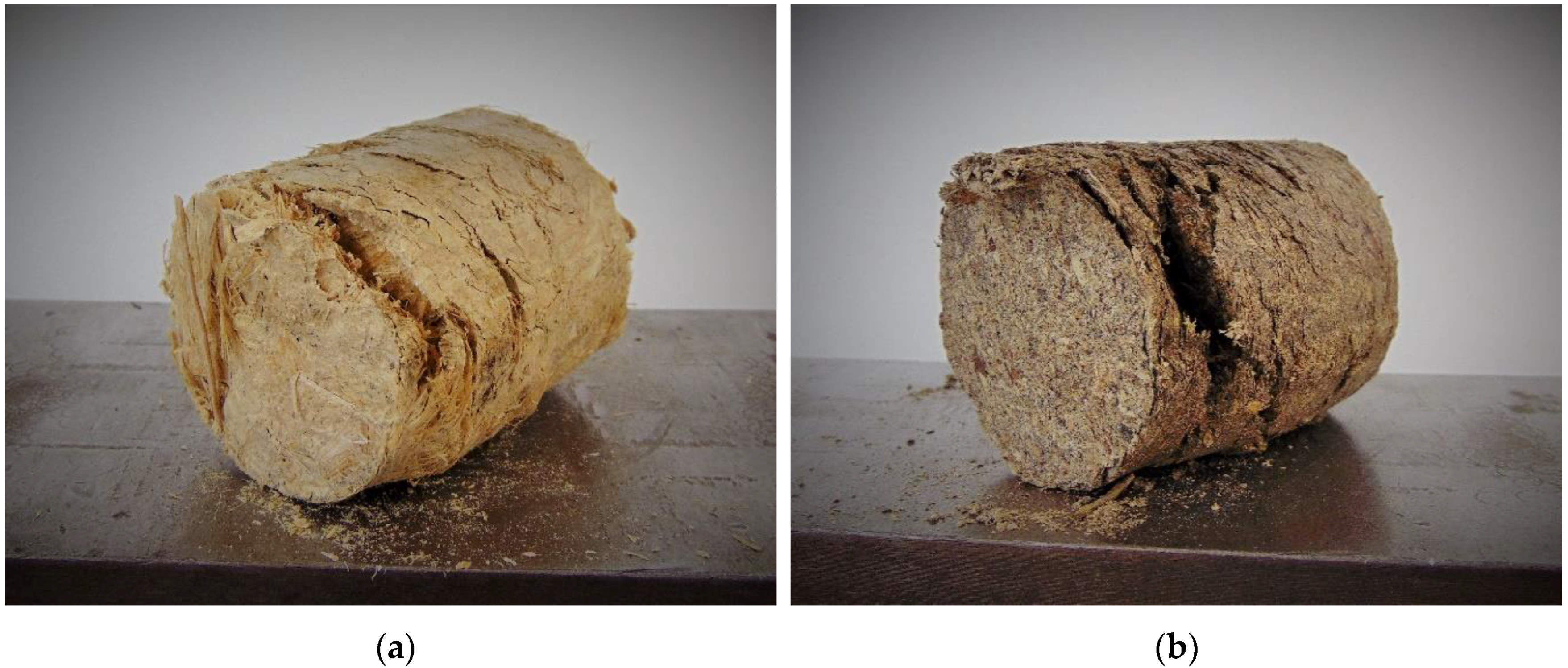The complex evaluation of the investigated bio-briquette production efficiency was based on the set of quality indicators of both feedstock materials and produced bio-briquette samples. All chosen indicators described the suitability of the investigated bio-briquette fuel for commercial production. Therefore, required indicator levels occurred at a high level in an attempt to ensure the highest quality of produced bio-briquette fuel. Nevertheless, mandatory requirements for solid biofuel commercial production differ within each country; the obtained results were compared with the European standards.
The present research aimed to answer the question of whether the chosen waste materials were suitable for bio-briquette production. In general, it was a complex process containing several necessary steps and could be influenced by many factors. Thus, before answering the main question posed, the following specific issues must be answered: (a) Is there a sufficient amount of such waste materials? Is there any functional existing way of its subsequent utilization? (b) Are those materials suitable for direct combustion processes? Is their fuel analysis positive for such purposes? (c) Are the materials suitable for drying and disintegration processes or do such steps involve difficulties? Is it possible to produce bio-briquette fuel from those materials? What is the final mechanical quality of such biofuel?
Answers to all of these questions are noted in the following sections or were explained in the Methodology Section.
3.1. Feasibility and Practicability of Production
The conditions of investigated materials production and potential reuse were primarily monitored in the target area. Both materials originated from plants that abundantly grow and are processed in the target area, with the only difference being that sugarcane plants are purposely cultivated as an agriculture crop, while bamboo plants grow wildly throughout the target area. Specifically, processed bamboo culms originated from the forests in the surrounding areas.
Both plants were nevertheless processed in the target area at a large-scale. Sugarcane plants were used for juice production by individual sellers; plants stems were skinned before squeezing of juice, which resulted in the production of sugarcane skin. Dried bamboo stems were manually skinned by small storekeepers and subsequently used for the production of various commercial items. As observed, both produced waste materials, bamboo fiber and sugarcane skin, were not reused properly in the target area (
Figure 11).
Bamboo processing plants were located in rural areas. Thus, bamboo fiber was burned as waste without any purpose in the fields or individuals used it as a fire lighter at a small-scale. Sugarcane plants were processed directly in the streets of Huế city, thus leading to part of the produced sugarcane skin ending up in garbage bins for municipal waste (
Figure 11). It is worth mentioning that the generation and amount of monitored waste materials were considerable and daily. In contrast, subsequent utilization of materials was rarely observed.
Bamboo plant populations or their cultivation were difficult to monitor because prevalent parts of the population are growing wildly. Focused on sugarcane plants, specific data of its production in Vietnam were available and are shown in
Table 2. Meanwhile, according to a statistical database of the United Nations Food and Agriculture Organization (FAO), world sugarcane crop cultivation in 2016 provided the following data: harvested area 26,774,304 ha, production quantity 1,890,661,751 t and yield 706,148 hg·ha
−1.
As observed in this table, sugarcane production in Vietnam has occurred at a high level in recent years. Thus, the production of sugarcane residues has also increased. Sugarcane plants are prevalently used for production of juice or sugar in Vietnam, and thus, sugarcane skin represents a considerable percentage ratio of produced waste biomass.
3.2. Fuel Analysis of Feedstock Materials
The present section describes the chemical parameters of the investigated materials, the required levels of which must be respected in practice, otherwise their burning (in the form of bio-briquette fuel) could cause environmental pollution. With respect to the data expressed in
Table 3, it is clear that moisture content
Mc (%) during experimental measurements occurred at a suitable level for bio-briquette production (i.e.,
Mc < 15%) [
30]. Mentioned values of moisture content
Mc do not represent a material’s moisture content in their initial form (at the moment of creation or collection) due to the necessary treatment within their transportation. However, as mentioned in the Methodology Section, bamboo fiber was removed from already sundried culms; thus, their (required) lower level of moisture content
Mc was expected. Such a factor evaluated the amount of energy input positively within the entire process of bio-briquette production, which in contrast to others, also contains feedstock drying. Moreover, if moisture content
Mc exceeds the suitable level, it complicates the densification process or makes it completely impossible to realize it.
When comparing the values of ash content
Ac (%), it is clear that bamboo fiber exhibited a good result, while sugarcane skin exhibited a result that was at the margin of tolerance (i.e., A
c < 10%) [
30]. Such a result represents a disadvantage of sugarcane material; however, it is still accepted by the mandatory requirements. Commonly, when a high level of ash content is detected, it can be caused by contamination of material due to external impurities (dust, soil). Nevertheless, sugarcane skin samples tested in the present research did not contain any impurities.
Table 4 provides a comparison of fuel property data obtained within the present research with data from other studies.
A higher level of ash content
Ac is commonly related to complications during biomass burning, which can result in low burning efficiency or damage to burning devices. In general, both materials represented herbaceous biomass, which prevalently exhibited a higher level of ash content
Ac in comparison to wood biomass [
43,
44]. However, the results of bamboo fiber samples were very good, thus proving the significant potential of such material, which were qualitatively comparable with wood biomass [
45,
46].
Energy potential expressed by calorific value is the most important indicator of fuel chemical quality, which indicates the amount of energy released from fuel during burning [
47]. The obtained
NVC data for both tested materials exhibited a high level of such an indicator; thus, these results were satisfactory. For commercial sale, bio-briquette fuel must exhibit
NVCs of at least 14.50 MJ∙kg
−1 for non-woody bio-briquette fuel and at least 15.00 MJ∙kg
−1 for woody bio-briquette fuel [
30]. Every biomass kind exhibits different levels of calorific value, as well as the requirements on each specific biomass kind of bio-briquette fuel differing (
Table 5).
The results of elementary composition (
Table 6) primarily proved the higher level of oxygen content
O (%) in the case of bamboo fiber, which is undesirable, while results for sugarcane skin were at a satisfactory level. In general, biomass elementary composition can influence final calorific value of produced biofuel, as well as influencing biofuel behavior during combustion. Higher levels of oxygen
O (%) influence consumption of air during biofuel burning and production of flue gas [
58].
Observed values were also converted into dry ash-free state to express results without the influence of ash presence (
Table 7).
3.3. Mechanical Analysis of Briquette Samples
Both investigated materials proved their suitability for bio-briquette production. For the densification process, it was possible to produce bio-briquette samples from them. Such a statement may not be a matter of course because the success of bio-briquette sample production is not guaranteed in advance.
Specific data evaluating the efficiency of the densification process were observed immediately following bio-briquette sample production. Thus, their bulk density
ρ (kg·m
−3) was stated. The results of the first investigated mechanical quality indicator are noted in
Table 8, together with the results of other investigated indicators.
Observed bulk density
ρ data proved satisfactory results in both cases, which indicates high quality bio-briquette fuel. As noted previously, bio-briquette fuel mechanical quality increases with increasing bulk density
ρ [
49,
59,
60] because it indicates bio-briquette fuels’ longer burning time and larger amount of produced heat [
61]. According to other published research, the level of bulk density
ρ of high quality bio-briquette fuels should occur at approximately 1000 kg·m
−3 [
56,
62,
63].
The results of the next investigated indicator, bio-briquette sample
DU (%), were obtained during experimental laboratory testing. A statement regarding bio-briquette fuel
DU (%), also termed abrasion resistance, is necessary and required within commercial production and represents a major deciding factor [
49,
62,
64]; thus, its performance was a pivotal point of mechanical analysis. Data noted in
Table 8 expressed extremely good results; measured
DU exceeded 97% for both materials, while the mandatory required level is a DU ≥ 90% [
31].
Figure 12 illustrates the conditions of bio-briquette samples after abrasion testing.
As observed in
Figure 12, tested bio-briquette samples were in very good condition; only the edges of their bodies were abraded. Such positive results were caused by the structural characteristics of the materials, which were able to create strong bonds between particles.
Such excellent results correspond to the highest level of
DU stated by related standards (i.e., DU ≥ 95%).
Table 9 shows a comparison of the result values of other investigated bio-briquette fuels sorted according to specific mechanical durability levels.
The level of
DU is prevalently influenced by the specifications of pressed feedstock materials, but also, a considerable influence of the forming pressure used was proven.
DU clearly increased with increasing forming pressure applied by pressing the briquetting press into the feedstock material [
65]. Applying such a process in practice could improve the unsuitable lower levels of other specific bio-briquette’s
DU.
The last monitored indicator was rupture force
RF, which is not defined by any mandatory standard. Thus, the evaluation of the observed results was performed only by comparison between the investigated materials. Data in
Table 9 indicate the marked differences observed. BF bio-briquette samples had an
RF = 143.30 N·mm
−1, while sugarcane skin bio-briquette samples exhibited an
RF equal to 46.50 N·mm
−1. The conditions of bio-briquette samples after
RF testing are visible in
Figure 13.
The considerably better strength of bamboo fiber bio-briquette samples was caused by the positive behavior of fibers during pressing; above that, fibers made strong bonds already during feedstock preparation. Thus, it can be concluded that fibrous materials have significant potential for bio-briquette production. In addition, the overall evaluation of both tested materials proved satisfactory when compared with other published data [
72,
73,
74].
